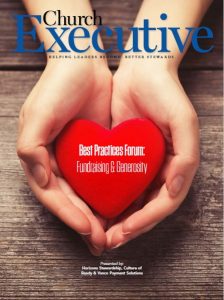
By Joe Park
The key to sustainable ministry funding lies right at the heart of the mission of the church: helping persons become fully devoted followers of Christ. When people take their discipleship journey seriously, certain behaviors begin to change, such as frequency in worship, serving on ministry teams, daily prayer, and giving of their financial resources.
Giving and generosity are clear and measurable indicators of discipleship. It is no surprise that churches with an effective discipleship path tend to have substantially higher levels of ministry funding.
So, how do we strengthen our discipleship path? And how can giving data help us?
For years, churches have collected the data needed to measure the effectiveness of their discipleship paths. But getting that data into an actionable format from their church management software (ChMS) is often a nightmare.
A couple of years ago, a tool was created to address this problem. MortarStone developed a web-based tool that works with ChMS to organize the mountains of data that churches have stored in their databases. MortarStone’s tools enable leaders of discipleship programs, mission teams, stewardship committees, and pastoral care to easily and directly access the information they need while still protecting sensitive donor information.

With a growing emphasis on measuring impact, churches are realizing it’s not enough to simply count activities and participants as the primary measures of a successful discipleship program. Church leaders want to know if lasting transformation is taking place. Individual generosity is, of course, a vital indicator of spiritual growth and a key element on the discipleship path.
With MortarStone, churches can measure growth in individual generosity and connect it to the ministry activity that precipitated that change. When churches understand what is working and what is not, they can reallocate resources to programs and ministries that are driving life change.
Here is a common example of using data to connect specific ministries with positive changes in key discipleship indicators. An executive pastor compared the giving patterns of people who participated in small groups versus nonparticipants. The executive pastor discovered small group participants gave, on average, $2,133 more per year. Based on the apparent impact of the small group ministry on the discipleship path, the church chose to invest $75,000 in new staffing to support small group ministries. Assuming a similar result for future small group participants, the church reasoned only 35 additional households were needed to cover the investment in staffing.
But, this example is just the tip of the iceberg
Church data can be used to track the impact of ministries such as Financial Peace University, serving ministries, and others. Want to know the impact of a recent mission trip? Curious about the effectiveness of your new member class or stewardship series? Want to know the differences in giving between your campus locations or worship services? With MortarStone, churches can effectively organize information and measure impact to make data-driven decisions regarding future ministry investments.
This technology exists to take the guesswork out of measuring the effectiveness of your discipleship path. By using increases in household giving as evidence of the transformative work of the Holy Spirit, churches can now make better decisions regarding programming and resource allocation.
As people deepen their walk with Christ through worship, spiritual growth and service, the harvest of your generosity plan grows exponentially because you are cultivating in richer spiritual soil.
Joe Park is managing partner at Horizons Stewardship, a national leader in guiding churches to increased funding, mission fulfillment and transformation. Thirty-eight ministry strategists and staff have helped local churches raise more than $7 billion in capital and much more in annual giving. Stewardship Discovery is Horizons’ comprehensive diagnostic process used to assess giving practices in the development and implementation of plans to increase personal giving in churches.


